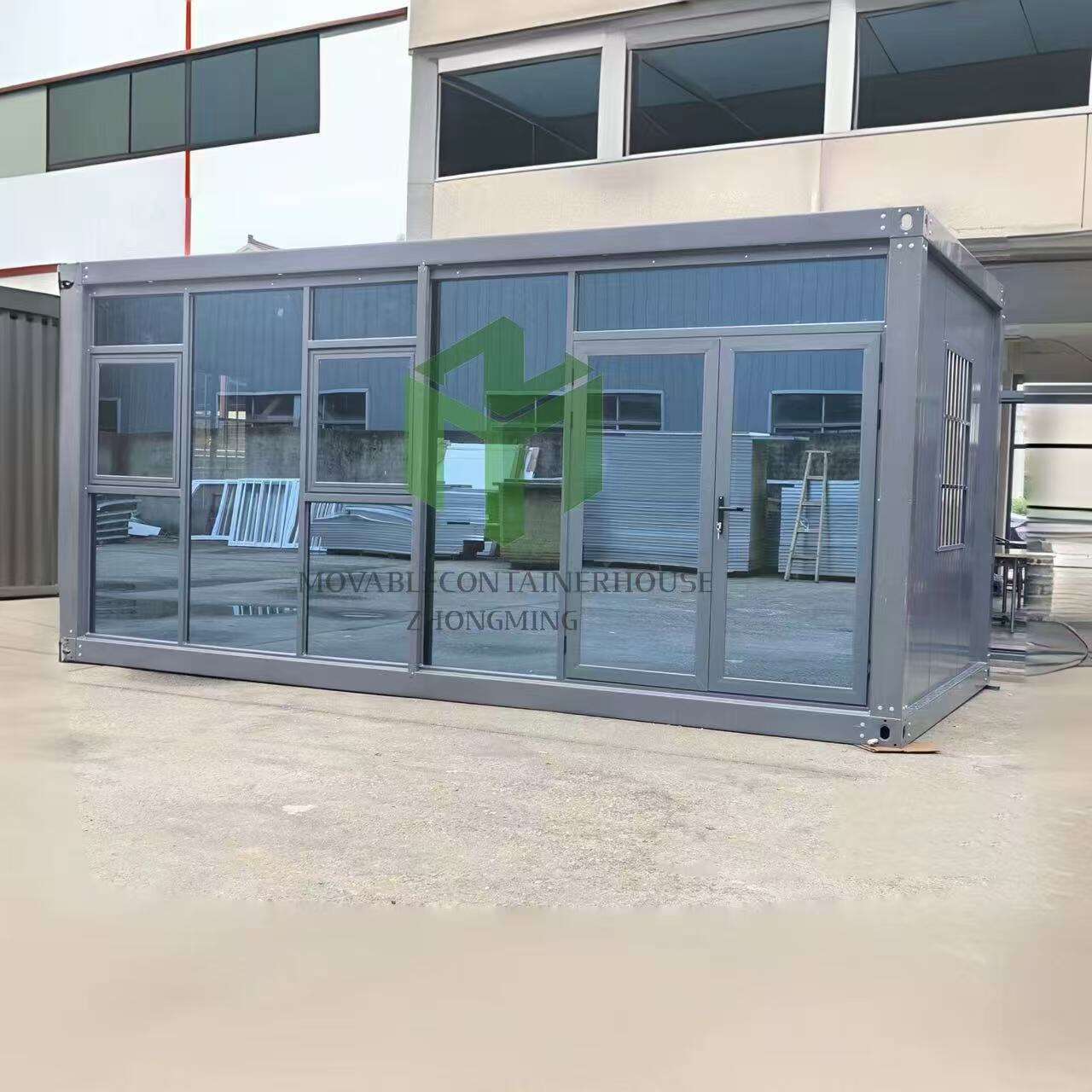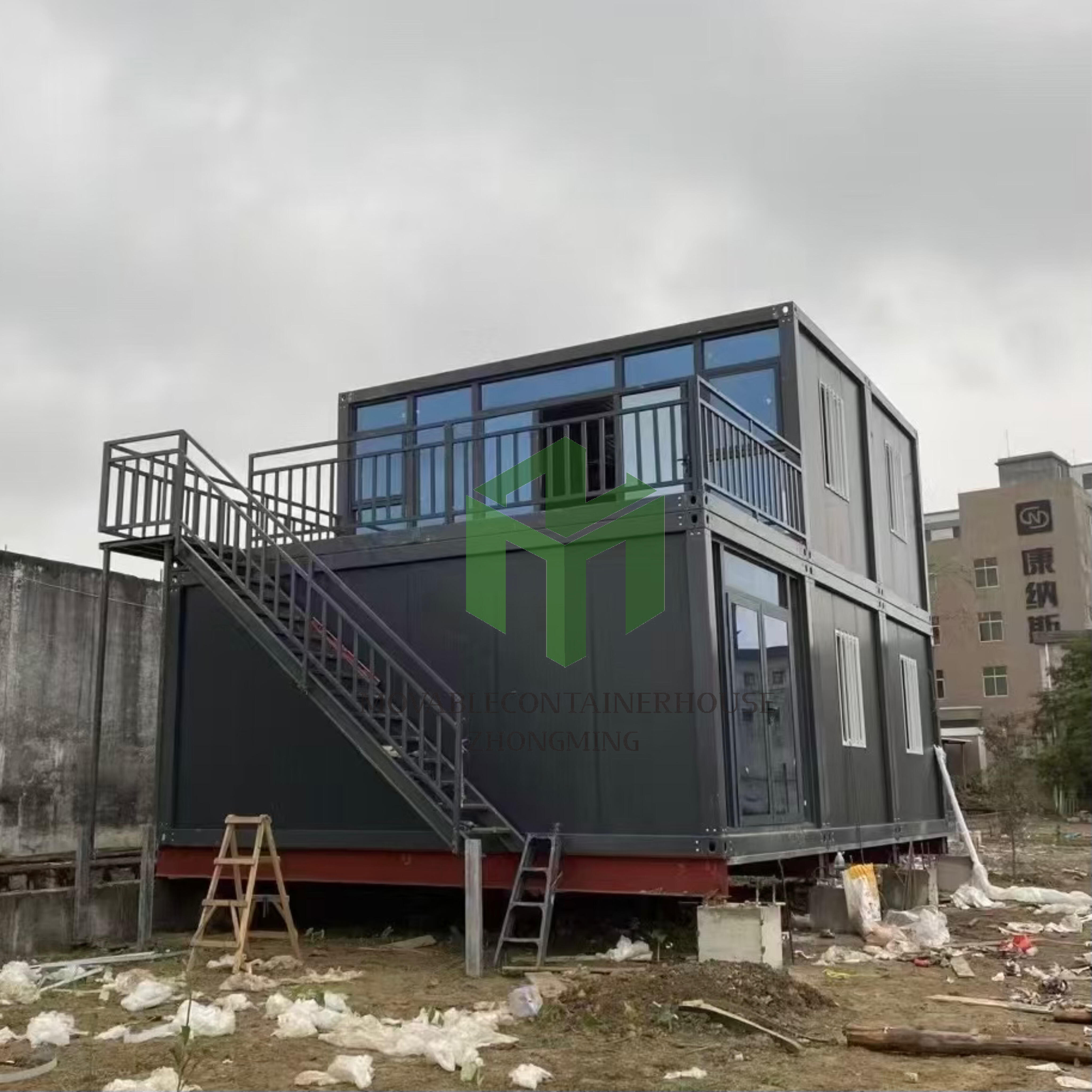The construction industry has witnessed a revolutionary shift with the emergence of modular container houses, transforming how we approach residential and commercial building projects. These innovative structures combine the durability of shipping containers with modern architectural design, offering unprecedented speed in construction timelines. A modular container house represents the perfect fusion of sustainability, efficiency, and rapid deployment, making it an ideal solution for urgent housing needs, temporary facilities, and permanent residential developments. The prefabricated nature of these structures allows for simultaneous off-site manufacturing while site preparation occurs, dramatically reducing overall project duration compared to traditional building methods.
Streamlined Manufacturing Process
Factory-Based Production Advantages
The manufacturing process of a modular container house takes place in controlled factory environments, eliminating weather-related delays that plague traditional construction sites. Factory production allows for standardized assembly lines where skilled workers can complete tasks with greater precision and speed. Quality control measures are implemented at every stage, reducing the need for rework and modifications that typically extend construction schedules. The controlled environment ensures consistent working conditions, allowing teams to maintain optimal productivity throughout the manufacturing cycle.
Advanced machinery and specialized tools in factory settings enable faster cutting, welding, and assembly processes compared to on-site construction methods. Workers can access materials and components more efficiently, as everything is strategically positioned within the production facility. The assembly line approach allows multiple modular container house units to be produced simultaneously, creating economies of scale that further reduce individual unit completion times. Standardized processes and procedures eliminate guesswork and reduce the learning curve for new projects.
Simultaneous Production and Site Preparation
One of the most significant time-saving advantages of modular container house construction lies in the ability to conduct manufacturing and site preparation simultaneously. While the structure is being built in the factory, foundation work, utility connections, and site grading can proceed in parallel at the installation location. This parallel processing approach can reduce total project timelines by 30-50% compared to sequential traditional construction methods. Site preparation activities include excavation, foundation pouring, utility rough-ins, and access road development.
The coordination between factory production and site preparation requires careful project management but yields substantial time savings when executed properly. Communication systems ensure that both teams remain synchronized, with manufacturing timelines aligned to site readiness dates. This approach minimizes idle time and maximizes resource utilization across both locations. Weather conditions affect site preparation but do not impact the factory production schedule, providing additional timeline protection.
Reduced On-Site Construction Time
Rapid Assembly and Installation
The on-site assembly of a modular container house requires significantly less time than traditional stick-built construction due to the pre-fabricated nature of the components. Most structural elements arrive at the site ready for immediate installation, with electrical, plumbing, and interior finishes already integrated into the modules. The assembly process typically involves crane operations to position modules, connection of utility systems, and final exterior finishing work. Experienced installation teams can complete the assembly of a standard residential unit within days rather than weeks.
The precision manufacturing ensures that modules fit together seamlessly, eliminating time-consuming adjustments and modifications typically required in traditional construction. Pre-installed windows, doors, and interior systems reduce the number of trades required on-site and minimize coordination challenges. Weather-resistant packaging protects finished surfaces during transport and installation, reducing the need for touch-up work. Standardized connection systems allow for rapid joining of modules and utility systems.
Minimized Weather Dependencies
Traditional construction projects face significant delays due to weather conditions, particularly during framing, roofing, and exterior finishing phases. Modular container house construction minimizes weather exposure since the majority of work occurs in controlled factory environments. On-site activities are limited to foundation work, module placement, and final connections, reducing weather-sensitive work phases by approximately 70-80%. The enclosed nature of completed modules protects interior components from weather damage during installation.
Rain, snow, and extreme temperatures have minimal impact on the compressed installation timeline of a modular container house project. The reduced on-site construction period means fewer opportunities for weather-related delays to affect project schedules. Proper planning can schedule installations during favorable weather windows, further minimizing potential disruptions. The durability of container-based structures also means they can withstand temporary weather exposure during installation without damage.

Standardized Design and Engineering
Pre-Approved Plans and Permits
Standardized designs for modular container house projects often utilize pre-approved architectural plans and engineering specifications, significantly reducing the time required for design development and permit approval processes. Building departments become familiar with these standardized designs, leading to faster review cycles and reduced back-and-forth communications. Many manufacturers maintain libraries of pre-engineered plans that meet various local building codes, eliminating the need for custom engineering on standard projects. The repetitive use of proven designs also reduces the risk of design errors that could cause construction delays.
Pre-approved structural calculations and load specifications streamline the engineering review process with local authorities. Standardized electrical and plumbing layouts that comply with national codes reduce the complexity of permit applications. Many jurisdictions have developed expedited review processes specifically for modular container house projects, recognizing their growing popularity and standardized nature. The use of proven designs also reduces liability concerns for engineers and architects, further accelerating approval processes.
Optimized Material Specifications
Standardized material specifications for modular container house construction enable bulk purchasing and inventory management that reduces procurement delays. Manufacturers can maintain strategic inventory levels of commonly used components, eliminating wait times for material deliveries. Standardized sizes and specifications also mean that materials can be pre-cut and prepared in advance of production schedules. Long-term supplier relationships ensure priority treatment and reliable delivery schedules for critical components.
The repetitive use of specific materials and components allows manufacturers to optimize their supply chains and negotiate better terms with suppliers. Quality control processes become more refined when working with consistent material specifications, reducing inspection times and approval cycles. Standardized components also simplify inventory management and reduce the risk of ordering errors that could delay production. Bulk purchasing power often results in cost savings that can be passed along to customers while maintaining shorter delivery timelines.
Reduced Labor Requirements
Skilled Workforce Efficiency
The factory-based production of modular container house units allows for more efficient utilization of skilled labor compared to traditional construction sites. Specialized workers can focus on their core competencies without the interruptions and inefficiencies common to construction sites. Assembly line production methods enable workers to develop expertise in specific tasks, increasing speed and quality while reducing errors. The controlled work environment also provides better working conditions that can improve worker productivity and reduce turnover.
Skilled trades such as electricians and plumbers can complete their work more efficiently in factory settings where materials and tools are readily accessible. The elimination of weather delays means that labor schedules remain consistent and predictable, improving workforce utilization rates. Training new workers becomes more efficient when processes are standardized and repeatable. The factory environment also allows for better supervision and quality control of skilled trade work.
Reduced On-Site Labor Coordination
Traditional construction projects require extensive coordination between multiple trade contractors, often leading to scheduling conflicts and delays. Modular container house installation requires significantly fewer on-site trades since most systems are pre-installed during factory production. The reduced number of concurrent workers on-site minimizes coordination challenges and potential conflicts between different trades. Installation crews typically consist of specialized teams trained specifically in modular assembly techniques.
The compressed installation timeline means that labor costs are concentrated into shorter periods, often resulting in overall cost savings despite potentially higher hourly rates for specialized installation crews. Reduced coordination complexity also decreases the administrative burden on project managers and general contractors. The predictable nature of modular installation allows for more accurate labor scheduling and cost estimation. Safety risks are also reduced when fewer trades are working simultaneously on the construction site.
Supply Chain Optimization
Streamlined Material Procurement
The standardized nature of modular container house construction enables manufacturers to optimize their supply chains for maximum efficiency and minimum lead times. Long-term relationships with key suppliers ensure priority treatment and reliable delivery schedules for critical components. Bulk purchasing agreements often include guaranteed delivery windows that support tight production schedules. Strategic inventory management allows manufacturers to maintain buffer stocks of essential materials to prevent production delays.
Standardized specifications mean that materials can be ordered well in advance of production needs, taking advantage of favorable pricing and ensuring availability. Suppliers become familiar with the specific requirements of modular container house production, leading to improved quality and faster processing of orders. The repetitive nature of orders also allows suppliers to optimize their own production and inventory management systems. Quality agreements with suppliers reduce incoming inspection requirements and accelerate material processing.
Just-in-Time Delivery Systems
Advanced planning and coordination enable just-in-time delivery systems that minimize inventory carrying costs while ensuring materials arrive exactly when needed for production. Sophisticated scheduling systems coordinate supplier deliveries with production schedules to optimize workflow and minimize delays. The controlled factory environment allows for precise timing of material deliveries without concerns about weather or site access issues. Electronic data interchange systems enable real-time communication between manufacturers and suppliers to adjust delivery schedules as needed.
Just-in-time systems also reduce the space requirements for material storage and handling within manufacturing facilities. Reduced inventory levels free up working capital that can be invested in production efficiency improvements. The elimination of excess inventory also reduces the risk of material damage or obsolescence. Coordinated delivery schedules help maintain consistent production flow and prevent bottlenecks in the manufacturing process.
FAQ
How much faster is modular container house construction compared to traditional building methods
Modular container house construction typically reduces overall project timelines by 30-50% compared to traditional stick-built construction methods. While a conventional house might take 4-6 months to complete, a modular container house can often be manufactured and installed within 6-12 weeks. The exact time savings depend on project complexity, site conditions, and local permitting processes, but the parallel production and site preparation approach consistently delivers significant schedule compression.
What site preparation is required before modular container house installation
Site preparation for modular container house installation includes foundation work, utility connections, site grading, and access road preparation. The foundation requirements are typically less complex than traditional construction since the container structure provides inherent strength and stability. Utility rough-ins for electrical, plumbing, and HVAC systems must be completed and positioned for connection to the pre-installed module systems. Proper drainage and site grading ensure long-term stability and prevent water-related issues.
Can modular container houses be customized without extending construction time
Standard customization options such as interior finishes, fixtures, and layout modifications can typically be incorporated into modular container house production without significant time delays. However, extensive structural modifications or non-standard engineering requirements may extend manufacturing timelines. Manufacturers often offer preset customization packages that have been pre-engineered to minimize production impact. The key is working within established design parameters and avoiding unique modifications that require special engineering or non-standard materials.
What permits and approvals are needed for modular container house projects
Modular container house projects typically require building permits, electrical permits, plumbing permits, and sometimes mechanical permits depending on local requirements. Many jurisdictions have streamlined approval processes for modular construction due to the standardized nature of the designs and factory quality control systems. Pre-approved plans and standard engineering specifications often accelerate the permit review process. Some areas may also require special approvals for container-based construction, though this is becoming less common as the building method gains acceptance.
Table of Contents
- Streamlined Manufacturing Process
- Reduced On-Site Construction Time
- Standardized Design and Engineering
- Reduced Labor Requirements
- Supply Chain Optimization
-
FAQ
- How much faster is modular container house construction compared to traditional building methods
- What site preparation is required before modular container house installation
- Can modular container houses be customized without extending construction time
- What permits and approvals are needed for modular container house projects


